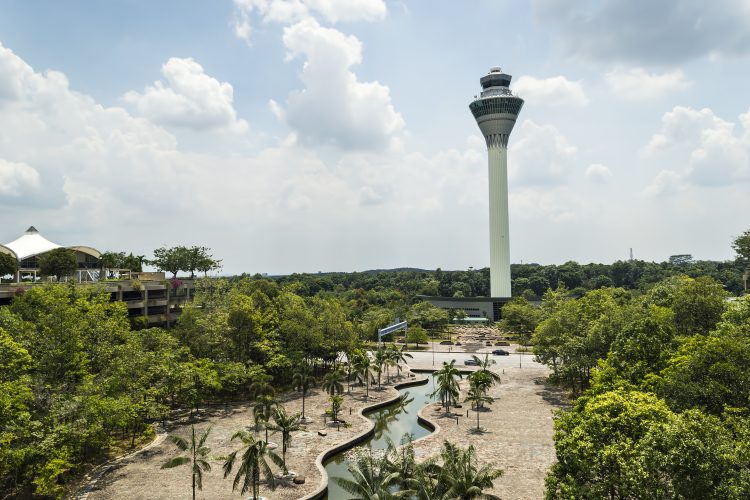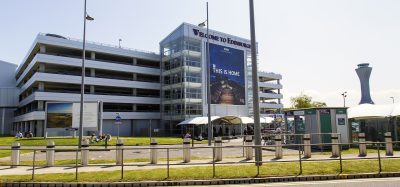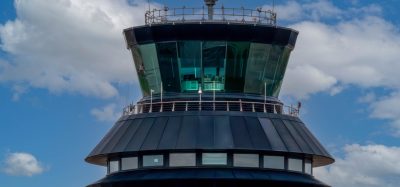Kuala Lumpur, the beacon of Malaysia: An Interview with Malaysia Airports
Posted: 9 March 2023 | Holly Miles | No comments yet
Listen to or read the conversation, which took place at the ROUTES Asia 2023 conference in Chiang Mai, Thailand.


At the recent ROUTES Asia 2023 conference, International Airport Review Editor Holly Miles caught up with Mohamed Sallauddin Mohamed Shah, General Manager for Aviation Marketing and Development Division at Malaysia Airports to discuss the recovery of the operator’s airports, the route development ambitions from the short- to long-term, the recovery of Kuala Lumpur International Airport, opportunities for this year that they are looking to capitalise on, and how liberal the air service market is in Malaysia. Sallaudin is cautiously optimistic for the future of air traffic, their main concern is the medium and long-haul markets and the tourism offices in Malaysia will have to work hard on this along with the airport.
Holly Miles: So we are here at the Routes Asia event here in the beautiful city of Chiang Mai Thailand, and I’m joined here by Sallauddin Shah, who is General Manager for Aviation Marketing and Development Division at Malaysia Airports. Sallauddin, thank you so much for joining me.
Sallauddin Shah: Welcome.
Holly: My first question for you is could you just give us a brief overview of Malaysia Airports and what it is you do?
Sallauddin: We are one of the major airport operators for the country. Right now we manage 39 airports, comprising five international airports, 14 domestic airports, and there’s another 16 which we categorise as STOLports. It’s less accessible cities and towns where we operate a small airport. And at the same time we do have an international airport that we manage and own, which is Sabiha Gökçen International Airport in Turkey, which is south of Istanbul.
Holly: Oh, I see. Okay. And so what are your route development ambitions then for your airport this year, maybe long term in the future?
Sallauddin: I think we place a great emphasis on one of our not one the flagship airport of the country, which is KL International Airport, which is located in Kuala Lumpur. They have been our most important airport in terms of passenger volume and in terms of serving the capital city of Malaysia. However, we do have another four international airports serving different parts of the country, starting with Penang International Airport, up north. And not far from Penang would be the Langkawi International Airport, which is a getaway island resort for most of the tourists. We also have two international airports serving the eastern part of Malaysia, which is separated by the South China Sea, which is located in Borneo. We have Kota Kinanbalu International Airport serving Sabah state and Kuching International Airport serving this the Sarawak state.
So what has happened, as you are fully aware, the last two or three years has been very challenging. Lots of aviation stakeholders, airports are no exception, airlines certainly are badly hit. We are all in financial distress in the last couple of years. So things were looking up since last year; borders began to open. And even our country, Malaysia, we have relaxed, and we do not impose any travel conditions, and we are seeing the industry, air travel industry and aviation beginning to bounce back.
So our priority would be to get back to the 2019 operation level as quickly as we can. But we all know that this is all subject to the individual markets or countries travel regulation or restriction. So we are seeing good progress.
Holly: So in terms of Kuala Lumpur Airport, how is the international traffic doing for you at the moment compared to 2019?
Sallauddin: We constantly monitor how fast the local carriers, as well the foreign crews can get back on their feet. In terms of connectivity, getting back all the airlines operating back to KL. We are about 80% in terms of airline numbers, but in terms of seat capacity, we’re only doing about 60%. So that means we are well covered, almost to the same level of routes that we used to operate, however, in terms of frequency, we’re not there yet because some airlines are doing … they probably used to do double daily, maybe now they do a daily flight instead, or some do three flights a week and all that. So those are the challenges which each airline is facing.
And as any other markets, each airline, they are faced with various challenges in terms of resourcing as well. So the good thing is that Malaysia Airports, the operational readiness in the airport, we are fortunate that we did not have to lay off our workforce. So we are good.
Holly: Fantastic.
Sallauddin: However, some of other service providers, ground handlers, some airlines, they do take a bit of time to recover their resources.
Holly: When are you predicting a full recovery then?
Sallauddin: Well, I guess to be a slightly conservative, probably end of next year back to 2019 levels.
Holly: Yeah, of course. Are there any regions that you feel you’re currently underserving? So are there any areas of focus for you?
Sallauddin: I think obviously it would be China. China has only announced that they are lifting lots of their travel restrictions only early this year, in January. However, it will take some time before the market reacts and start responding to this new landscape, because as any other travellers or any travel service providers, they will take time to resource, to plan, to market and all that. So, it’s been a slow gradual recovery for China, but that’s why we feel hopefully by end of this year we’ll see a lot more airlines recommencing their flights with passengers on board as well.
Holly: And I mean there’s some Chinese carriers here today, aren’t there? So probably going to be looking to-
Sallauddin: We met some of them, but you would notice the profile of the Chiese carriers here, these are not the big carriers. These are the private upstarts and up and coming airlines, new ones, but the traditional mainstream airlines are not here.
Holly: Oh, I see. Why do you think that is?
Sallauddin: Well, I think they may take a longer time to get approval to travel abroad, maybe, because they are state-link state-owned companies. So I think their travel processes are a bit more, how would I say? I wouldn’t say complex, but they require a bit more approval levels maybe. That’s just my assumption. Yeah.
Holly: What are your challenges for this year that you foresee?
Sallauddin: When we speak to airlines, we’re just one part of the big puzzle. And for us to entice the airlines, it’s predominantly based on how the market is going to respond to those flights, whether there’s enough demand and whether the demand is one way or both ways. So those will be the challenges that we are not able to confirm with the airlines.
I think the airlines are a lot more in a better position to understand that from us, because we serve the airlines, it’s more of a B2B arrangement and relationship, whereas the mass market, the consumers, it is more the airlines engaging the travel service providers, their tour operators, their services. So they have a better understanding. We do sometimes analyse that, but they are in a better position. So when we start talking to an airlines, this is what we can assist, but the bigger variable, the more significant variable will be the other third party, which we have a little understanding knowledge. Because, as I’ve said, for market to rebound, there’s a lot of resource issue that needs to be addressed. Are you getting the same reliable tour operators? Are you getting the same quality of hotel providers with the right service level, with the right capacity that you wish? So all those are now being… these are all reset. So what worked last time may not work this time. So you got to re-establish those value chains.
For Kuala Lumpur, it’s always been making greater accessibility for the capital city because Kuala Lumpur is the capital of Malaysia, it’s the beacon of Malaysia, so we’ve got to be a very strong hub. And noticing the strength of our local carriers for the last couple of years, we may need to rely more on foreign carriers.”
Holly: Wow. So it’s almost back to the drawing boards then?
Sallauddin: I guess so.
Holly: Fresh start.
Sallauddin: Yes. Yes.
Holly: Okay. So what do you foresee as being your opportunities that you’re looking to capitalise on this year, and do you have any exciting developments that you’re able to share with us?
Sallauddin: It’s been our long-term goal. I mean, other airports, for instance like Penang, Kota Kinabalu, they serve more the regional markets. So they have a very unique proposition because we can focus on those easy reachable destination or cities.
For Kuala Lumpur, it’s always been making greater accessibility for the capital city because Kuala Lumpur is the capital of Malaysia, it’s the beacon of Malaysia, so we’ve got to be a very strong hub. And noticing the strength of our local carriers for the last couple of years, we may need to rely more on foreign carriers.
Some airports with a very strong presence of their local hub carriers, so they are very privileged. In our case, we have a mixed case of could-be-better local carriers, but because of that situation, we need to lure more foreign carriers. That would be our opportunity for us to engage more airlines from the western region. We used to have plenty of connectivity from Europe, from America, but due to the changes in landscape and environment, we don’t have that anymore. So now that’s important for us to regain that connectivity.
Holly: And how easy is it for a new airline to start operating with yourself in Malaysia?
Sallauddin: I think generally, first and foremost, airlines would need to need to secure the traffic rights. And to a very large extent, our air service agreement with most countries are very liberal, with exception of few, one or two. So if an airline from a foreign country wants to operate, it’s easy. Thereafter, you’ve got to apply for the slots. We’ve got a choice of five international airports for Kuala Lumpur. We’ve got two terminals; so, we’ve got huge capacity, terminal capacity, so that’s not a huge problem.
But what makes it easier that we’ve had this formula all along. To get an airline, we work closely with the other local stakeholders, especially the national and the state tourism organisations. So, to strengthen our proposition and offer to those airlines, they come over to Kuala Lumpur, come over to Penang, not only the airports will provide you assistance and facilitate your entrance, however, these local authorities will provide assistance, support in whatever form necessary to make your flight a reality and sustainable.
Holly: And once you’ve got these airlines, how do you work to actually retain them for the next year?
Sallauddin: First and foremost, we got to make sure that their operations are efficient, they get the right slot timings that they wish they can serve their market at both ends. Secondly, in the past, this was before the COVID days, we used to provide some assistance based on your performance. This is typical in most airports where if you grow, especially when you grow a market, then there is some reward given to the airlines. That will assist them in terms of reducing their cost of operations. So we are planning to reinstate that so when market recovers, then those airlines will be appropriately rewarded to make their routes sustainable.
Holly: Fantastic. Final question for you then. What is your business outlook? Are you positive for the future?
Sallauddin: I am positive, but I’m cautiously positive. We’ve, again, our main market is ASEAN. The ASEAN is self-recovering. It’s a short sector within two to four hours flight range. So the minute borders are open, economy is chugging along as expected. So the usual business traffic, the traders, the VFR, the tourists will come back naturally. So that’s not our main concern.
It would be the medium-haul and the long-haul, because it now takes a lot of effort for airlines to make it work, like I said, so the previous market demand may not be there anymore; you’ve got to work harder, you got to promote harder, invest harder, because you’ve lost some ground in the last two or three years, so people may forget about Kuala Lumpur, so tourism will have to work a lot harder with us.
So that’s something I’m cautiously optimistic. However, a lot of things will be learned through this new phase of engagement with the airlines.
Holly: Absolutely. I noticed that you’re here today with your Malaysian Tourist Board, so you must be working quite well together.
Sallauddin: We are. In fact, not only the federal Malaysia tourism, Tourism Malaysia, but also the state tourism. We have Langkawi, we have Sarawak, we have Sabah, from various states. Of course they’re here also to support us because we’re going to host Routes Asia Langkawi next year in 2024.
Holly: Fantastic. Sallauddin, that was my final question. Thank you so much.
Sallauddin: Okay. Okay.
Related topics
Related airports
Kota Kinabalu International Airport (BKI), Kuala Lumpur International Airport (KUL), Kuching International Airport (KCH), Langkawi International Airport (LGK), Penang International Airport (PEN)


















